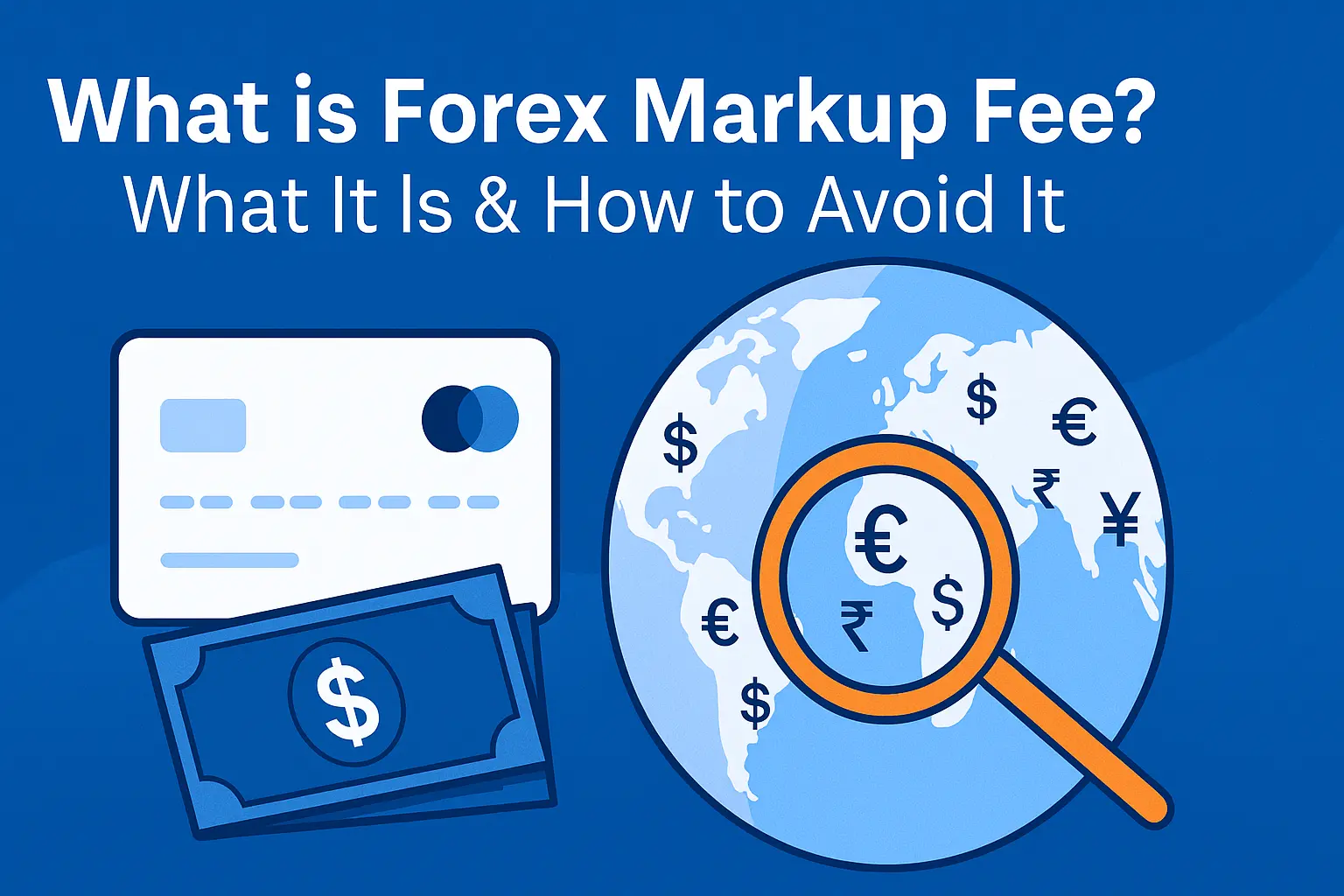What is Forex Markup Fee? Meaning, Charges & How to Avoid It

Simplify Your International Payments
Skip the complexity of traditional wire transfers with EximPe's smart payment solutions
Complete international transfers in hours, not days, with real-time tracking
Streamline BOE and Shipping Bill regularization online, and generate e-BRCs effortlessly.
Having been an account user, you may have observed the insertion of an extra forex markups fee on the statements when utilizing your debit or credit card card and in a foreign country and when incurring an international payment. But what is forex markup fee and why do we get charged such?
This article by EximPe will explain what forex markup fee means, how it works, typical rates in India, and practical ways to reduce or avoid these extra charges on your international transactions.
What is Forex Markup Fee?
Forex markup fee (foreign exchange markup fee) is an additional fee charged by banks and credit card companies on top of the currency exchange rate when you make a transaction in a foreign currency.
🔑 Forex Markup Fee Meaning:
It is a percentage-based fee applied for the convenience of processing international transactions and converting currencies. This fee covers conversion risks, operational costs, and profit margins for banks or card issuers.
How Does Forex Markup Fee Work?
When you spend in a foreign currency:
- The transaction amount is converted into INR (or your home currency) at the prevailing interbank or card network exchange rate.
- Your bank or card issuer adds a markup fee (usually 1% to 3.5%) on the converted amount before billing it to you.
For example:
- You spend $1,000 abroad.
- Exchange rate: ₹83/$ → Amount billed in INR = ₹83,000
- Forex markup fee (3.5%): ₹2,905 added
👉 Total charged: ₹85,905
Why Do Banks Charge Forex Markup Fees?
- To cover currency conversion risks and volatility
- As processing and service charges for international transactions
- To add profit margins on cross-border payments
Typical Forex Markup Fee Rates in India
💡 Note: Always check your card’s fine print to know the exact fee.
How to Avoid or Reduce Forex Markup Fees
Here are practical strategies to minimise or eliminate forex markup charges:
✅ 1. Use Zero Forex Markup Cards
Many banks now offer travel credit cards with zero or minimal forex markup for international usage. Examples include:
- Niyo Global Card
- RBL World Safari Card
- HDFC Infinia or Regalia (low markup rates)
✅ 2. Choose a Multi-Currency Forex Card
Load forex cards in multiple currencies to avoid conversion fees and reduce markup charges when you travel or pay international vendors.
✅ 3. Pay in Local Currency
When asked at payment terminals abroad, always choose to pay in the local currency. Dynamic Currency Conversion (DCC) often adds hidden fees alongside the bank’s markup.
✅ 4. Use International Bank Transfers with Transparent Rates
Platforms like Wise or Eximpe provide transparent forex rates with lower fees compared to traditional banks.
For example, Eximpe’s Global Trade Account offers multi-currency solutions with competitive forex conversion rates to save costs on global payments.
✅ 5. Opt for Bank Accounts with Low Forex Fees
Some NRE/NRO accounts or specialised current accounts for exporters/importers provide preferential forex rates and lower markup fees.
Is Forex Markup Fee Different from Currency Conversion Fee?
Often used interchangeably, but technically:
- Currency conversion fee: charged by card networks (Visa/Mastercard) for converting currency
- Forex markup fee: charged by banks/card issuers as an extra service fee on top of the conversion
Both are billed together on your statement, increasing your effective transaction cost.
Conclusion
It is imperative that the meaning of forex markup fee and how it impacts on your international financial expenditure is understood in regard to both personal finance management and in regards to the business management. Selecting the proper cards, platforms of payment and forex solutions will allow you to cut down significantly on the hidden cost and make your international transactions much more cost-efficient.
FAQs: Forex Markup Fee
1. What is forex markup fee?
It is an additional percentage-based fee charged by banks on foreign currency transactions to cover conversion and operational costs.
2. How much is forex markup fee in India?
Typically 1% – 3.5% depending on your card or bank.
3. How can I avoid forex markup fees on my credit card?
Use zero forex markup cards, multi-currency forex cards, or platforms offering better forex rates for payments.
4. Is forex markup fee charged on forex cards?
Yes, but it is generally lower (1% – 2%) than regular credit or debit cards.
5. Does forex markup fee apply on international ATM withdrawals?
Yes, in addition to ATM withdrawal charges and currency conversion fees.
6. Why is forex markup fee charged?
To cover currency volatility, processing costs, and add profit margins for banks/card issuers.
7. What does forex markup fee mean on a credit card statement?
It is the extra fee charged over the converted INR amount for transactions made in foreign currencies.
8. Can forex markup fee be refunded?
Generally, no. It is a standard fee unless incorrectly charged.
9. Which cards have zero forex markup fees?
Cards like Niyo Global, RBL World Safari, and select premium cards offer zero or low markup options.
10. Does Eximpe offer forex solutions to reduce markup fees?
Yes. Eximpe’s Global Trade Account offers competitive forex conversion rates to help exporters and importers reduce international transaction costs.
Simplify Your International Payments
Skip the complexity of traditional wire transfers with EximPe's smart payment solutions
Lightning Fast
Complete international transfers in hours, not days, with real-time tracking
Bank-Grade Security
Multi-layer encryption and compliance with international banking standards
Global Reach
Send payments to 180+ countries with competitive exchange rates